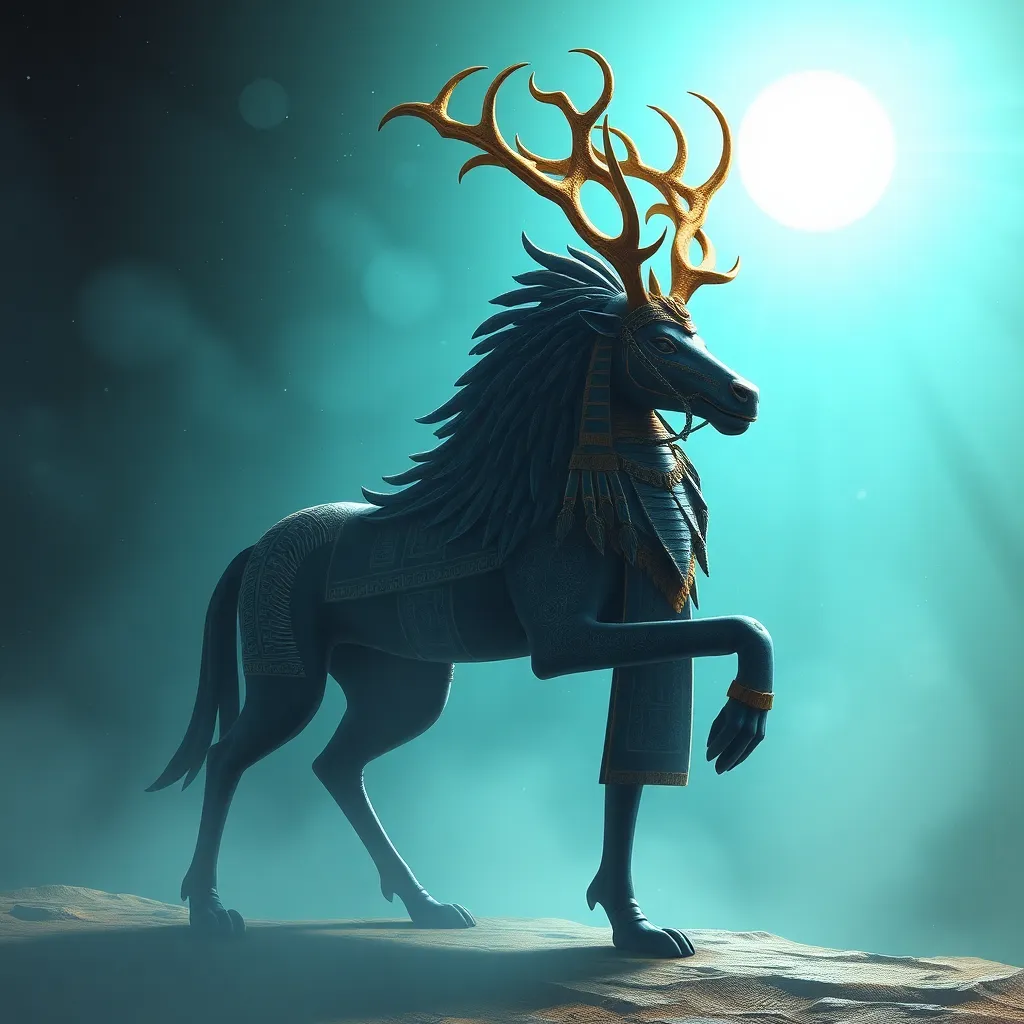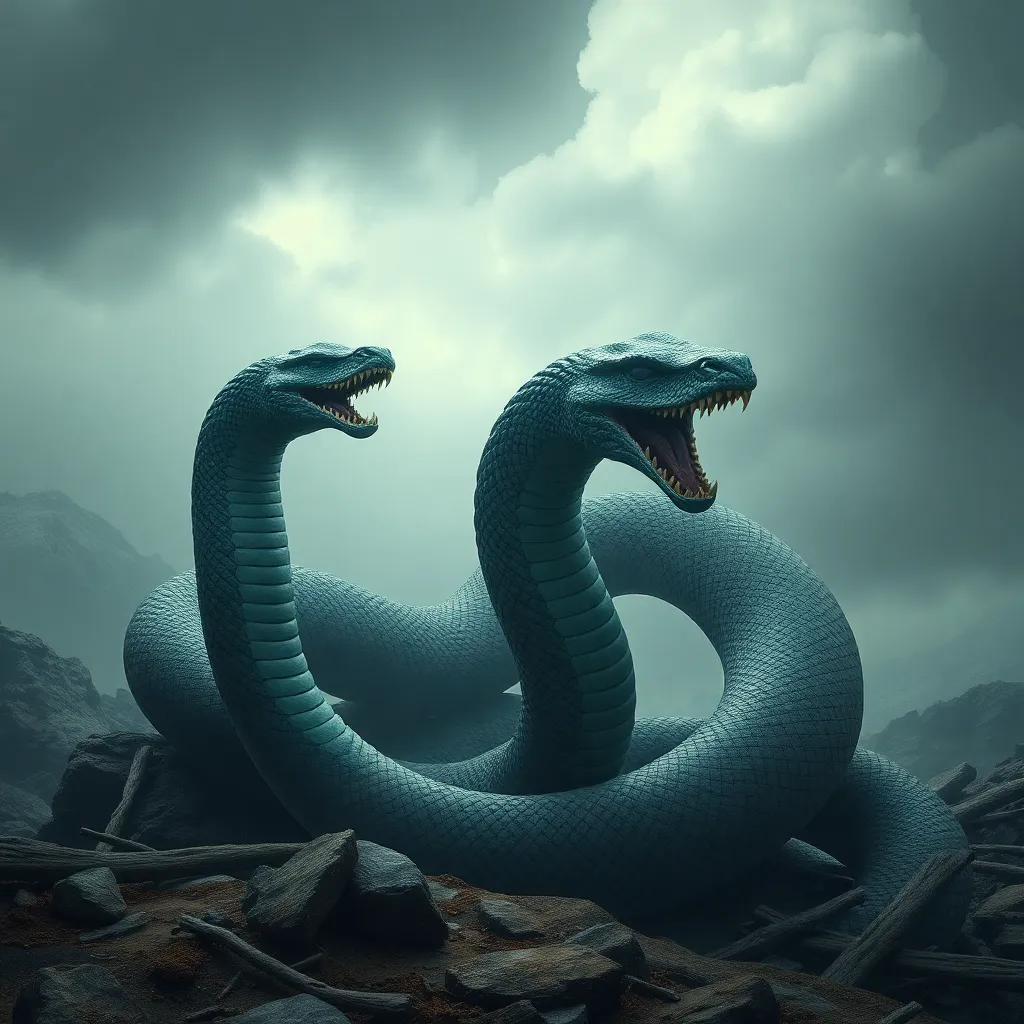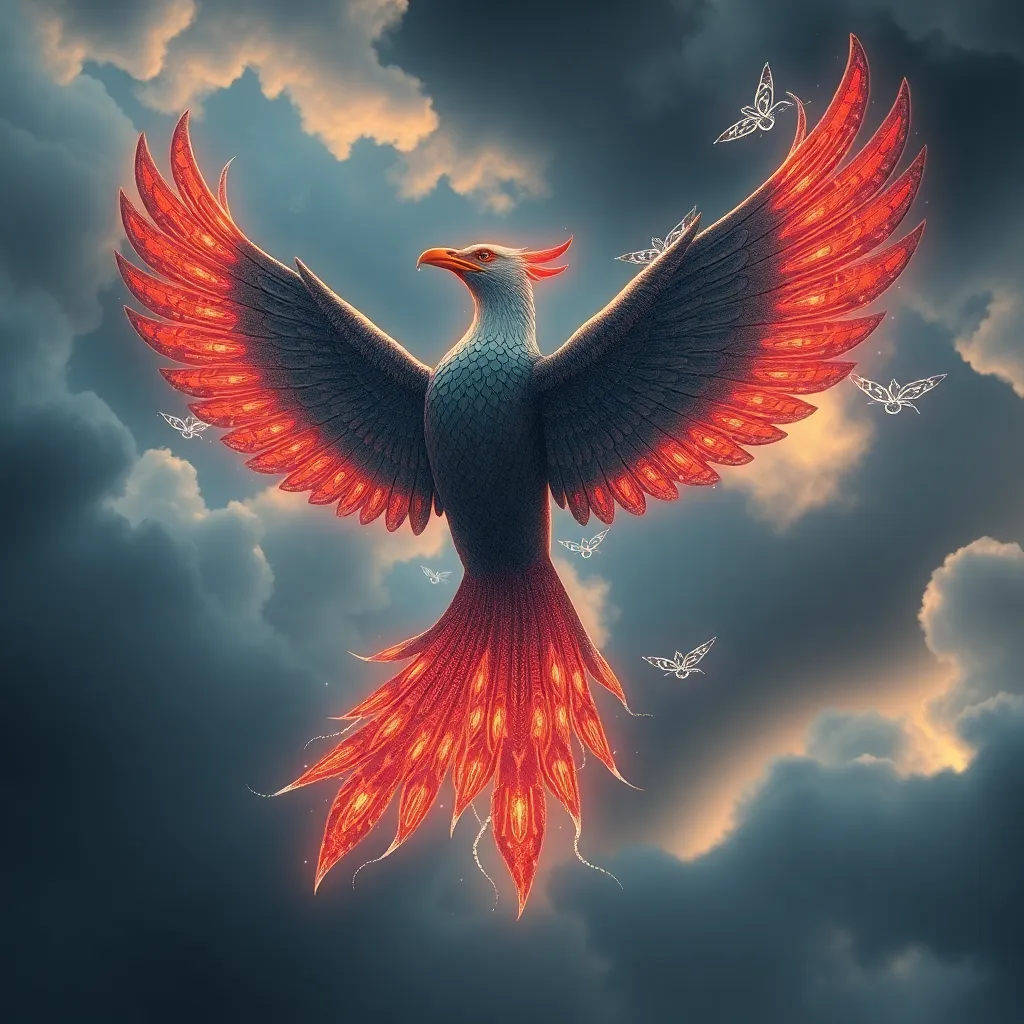The Dragon’s Grip on Eternity: Níðhöggr and the Cycles of Creation and Destruction
I. Introduction
Níðhöggr, a fearsome dragon from Norse mythology, embodies the complex themes of creation and destruction woven throughout ancient narratives. This creature, known for gnawing at the roots of Yggdrasil, the World Tree, serves as a potent symbol of the cyclical nature of existence. In this article, we will explore Níðhöggr’s role in these cycles, examining how this dragon connects the realms of life and death, creation and destruction.
II. Níðhöggr: The Dragon of the Underworld
Níðhöggr is often depicted as a gigantic dragon that resides in Niflheim, a realm associated with cold and darkness. Known for its malevolent nature, Níðhöggr plays a critical role in the mythological landscape of Norse cosmology.
- Characteristics: Níðhöggr is described as a serpent-like creature with a fierce appearance, often depicted with sharp fangs and a voracious appetite.
- Role in Cosmology: This dragon feeds on the roots of Yggdrasil, symbolizing the destructive forces of nature that threaten the balance of life.
- Symbolism: In many cultures, dragons represent chaos and destruction, but they can also symbolize wisdom and the guardianship of treasures, highlighting the duality of existence.
III. The Tree of Life: Yggdrasil and Its Connections
At the center of Norse cosmology lies Yggdrasil, the immense World Tree that connects the nine realms of existence. Níðhöggr’s relationship with Yggdrasil is crucial to understanding the cycles of life and death.
- Yggdrasil’s Overview: Yggdrasil is a giant ash tree whose branches reach into the heavens while its roots extend into the underworld, embodying the interconnectedness of all beings.
- Níðhöggr’s Role: By gnawing at Yggdrasil’s roots, Níðhöggr signifies the destructive aspects of life, reminding us that all things must eventually decay.
- Roots and Branches: The roots of Yggdrasil signify the past and the underworld, while the branches represent the future and the heavens, illustrating the continuous cycle of life and death.
IV. The Cycle of Creation: Birth and Existence
The Norse creation myths depict a world born from chaos, with Níðhöggr playing an integral role in the ongoing processes of creation and existence.
- Creation Myths: According to the Prose Edda, the world was formed from the body of the slain giant Ymir, showcasing the theme that destruction is often a precursor to creation.
- Níðhöggr’s Involvement: The dragon’s relentless gnawing on the roots of Yggdrasil serves as a reminder that decay and destruction are necessary for new life to emerge.
- Interplay of Life: Níðhöggr’s actions reflect the natural cycle where life feeds on death, illustrating the delicate balance maintained in the universe.
V. The Cycle of Destruction: Endings and Renewal
Central to Norse mythology is the concept of Ragnarök, a cataclysmic event that leads to the end of the world, followed by its renewal. Níðhöggr plays a significant role in this cycle of destruction.
- Ragnarök Overview: During Ragnarök, various gods and creatures, including Níðhöggr, engage in a final battle that results in widespread destruction across the nine realms.
- Níðhöggr’s Role: At Ragnarök, Níðhöggr is prophesied to escape from Niflheim and wreak havoc, symbolizing the ultimate forces of destruction.
- Destruction and Renewal: The aftermath of Ragnarök leads to the rebirth of the world, emphasizing the cyclical nature of existence where endings pave the way for new beginnings.
VI. The Duality of Existence: Life and Death
Níðhöggr’s existence raises profound philosophical questions about the nature of life and death, underscoring the balance inherent in our world.
- Philosophical Implications: The presence of Níðhöggr serves as a reminder that life is fleeting and that death is an essential part of the cycle.
- Balance in Nature: Just as creation and destruction coexist in nature, so do life and death, illustrating that one cannot exist without the other.
- Human Experience: Níðhöggr’s narrative reflects the human experience, where struggles and challenges ultimately lead to growth and renewal.
VII. Níðhöggr in Modern Culture
Today, Níðhöggr continues to inspire various forms of contemporary media, demonstrating the relevance of ancient myths in modern society.
- Representation in Media: Níðhöggr has appeared in video games, literature, and films, often portrayed as a powerful creature embodying chaos and destruction.
- Relevance of Myths: The enduring themes found in Níðhöggr’s story resonate with contemporary audiences, reminding us of the cycles of existence that we face in our lives.
- Lessons from Níðhöggr: The tale of Níðhöggr teaches us about the importance of recognizing and respecting the cycles of creation and destruction in our personal and communal lives.
VIII. Conclusion
Níðhöggr stands as a potent symbol of the cycles of creation and destruction that define existence. Through its role in Norse mythology, we gain insights into the delicate balance of life and death, reminding us that every ending can lead to a new beginning. As we reflect on these enduring themes, it becomes clear that understanding the cycles represented by Níðhöggr is vital for our own journeys through life.



